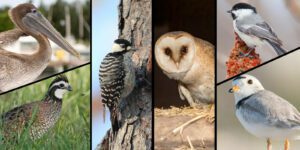A Wild World of Opportunity: Programs for landowners to fine-tune their properties for wildlife
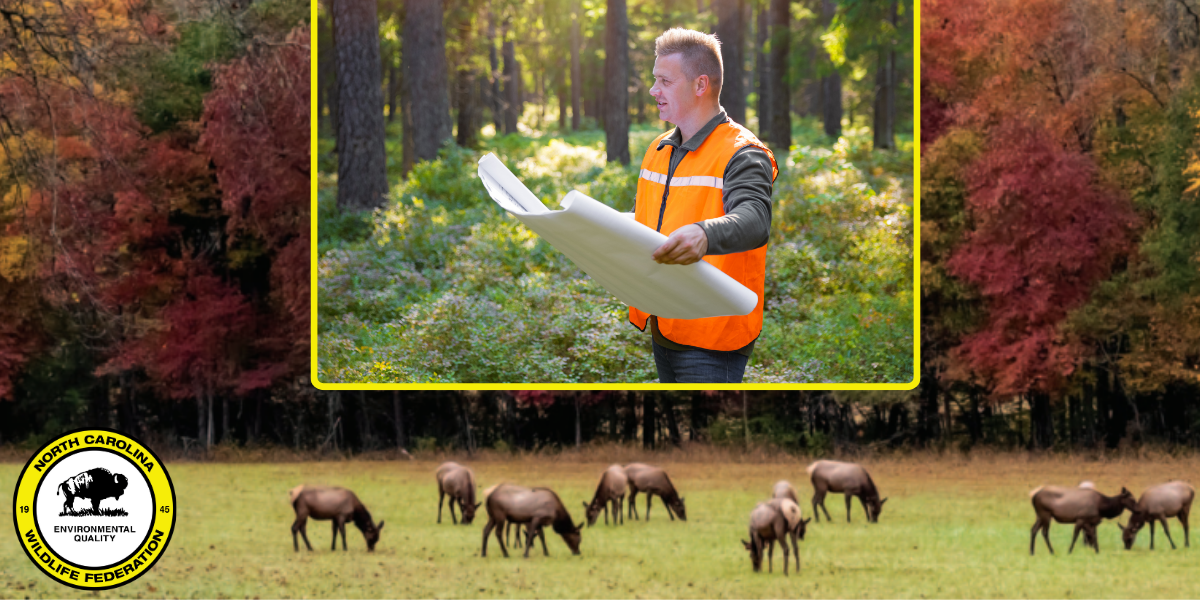
This piece was featured in the Fall 2023 Edition of the NCWF Journal.
The age-old adage holds true: if you build it, they will come.
And given that more than eight out of every 10 acres in North Carolina are privately owned, the state’s landowners are a critical component of ensuring a future of abundant wildlife. The good news is that wildlife species from Monarch butterflies to wild turkey and white-tailed deer can thrive wherever they are provided with the four elements they need to survive— food and cover, clean water, and places to raise young.
The even better news? Whatever natural space you have, from a balcony garden to a forested estate, can be used to help support wildlife. And you don’t have to do it alone.
There are plenty of non-regulatory, easily implemented practices that you can employ on your own land for the betterment of wildlife. And plenty of agencies and organizations— such as NCWF—that stand ready to show you the way. And possibly help pay for it. NCWF works to ensure that adequate and robust funding is available to agencies to assist landowners, and that there are resources for landowners to seek for habitat conservation and wildlife management on their lands.
From cost-share programs, tax reduction opportunities, and technical expertise, here are some questions—and answers—to one of the most common requests we hear: What can I do on my property to help wildlife thrive?
How can landowners manage habitat for wildlife on private lands and cover the cost?
To answer this question, we reached out to John Isenhour, Wildlife Habitat Coordinator for the N.C. Wildlife Resources Commission. Isenhour has helped many North Carolinians manage their lands to achieve landowner goals and provide habitat for a wide range of wildlife, transforming agricultural and forested lands into wildlife havens. His knowledge and expertise come from many years of experience with on-the-ground habitat management and implementation.
It can be very challenging to calculate the actual cost of managing “wildlife habitat” on private lands. While it seems like a no-brainer, the core of this challenge is the definition of wildlife that we use to develop recommendations and gauge the success of our actions. Often, our initial conversations with landowners include the phrase “I want to do something for wildlife,” or some similar verbiage.
If we take the broad statement “something for wildlife” literally, it would make our job as biologists very easy, as we could use a cliché such as “put up two bird houses and call me next year” and move on to the next landowner. This approach would be a disservice to the landowner, but more importantly, it would have limited wildlife benefit, especially for those animals that are considered Species of Greatest Conservation Need (SGCN). This suite of more than 450 species in North Carolina includes those listed as threatened, endangered, or of special concern, as well as species whose population numbers have experienced significant declines. It follows that these species are in the greatest need of conservation efforts, which is where private landowners can play a vital role.
To develop the correct management prescription, we as resource professionals need to know what species, or at least a group of species, the landowner is interested in managing for on their property. In addition, we must consider the current condition of the land, what equipment the landowner has access to, and any other benefits or limitations that may come into play. All these factors can greatly impact the cost of implementing a successful habitat management project.
Once the appropriate management practices are identified, we can determine implementation costs, but we must also consider the fore gone income and opportunity costs realized by land owners who choose to manage their property for critical habitat types and SGCN. Landowners who utilize their property for forest and agriculture production provide some habitat value for generalist species, but management techniques typically used for commodity production offer minimal habitat benefit for priority wildlife species. However, with careful planning, specialized practices can be implemented on private lands to enhance wildlife habitat if the landowner prioritizes conservation of species in need.
What are some programs available to private landowners wanting to support SGCN that will help to offset some of the costs?
The Farm Bill has several programs that offer financial assistance to implement practices intended to benefit our declining wildlife, critical 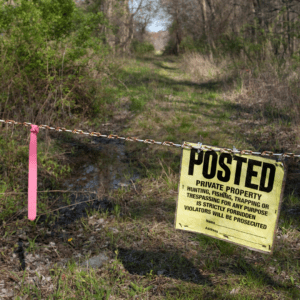 habitats, and SGCN. These programs are administered by agencies within the U.S. Department of Agriculture (USDA), and each program has its own unique qualifications and priorities. The Conservation Reserve Program (CRP) is administered by the Farm Service Agency and is intended to take marginal cropland out of production or modify livestock production activities on grasslands to improve water quality, maintain soil health, and enhance wildlife habitat. From a habitat management standpoint, CRP can fund conversion of cropland to a mixture of native grasses and wildflowers to benefit early succession birds and pollinators species.
habitats, and SGCN. These programs are administered by agencies within the U.S. Department of Agriculture (USDA), and each program has its own unique qualifications and priorities. The Conservation Reserve Program (CRP) is administered by the Farm Service Agency and is intended to take marginal cropland out of production or modify livestock production activities on grasslands to improve water quality, maintain soil health, and enhance wildlife habitat. From a habitat management standpoint, CRP can fund conversion of cropland to a mixture of native grasses and wildflowers to benefit early succession birds and pollinators species.
The Environmental Quality Incentives Program (EQIP) provides funding for installation of conservation practices to address a wide range of natural resource concerns. This program is administered by the Natural Resources Conservation Service (NRCS) and typical contract lengths may be from 1 to 5 years. EQIP has a long list of eligible practices, and several can be used to directly address declining habitats and SGCN like hellbenders and golden-winged warblers. Practices that are commonly used across the state include establishment of native herbaceous vegetation to benefit pollinators and early succession bird species, forest stand improvement activities that enhance the structure and composition of forest ecosystems, herbicide application to control non-native plant species, and prescribed burning to promote native plant diversity.
The Conservation Stewardship Program (CSP) is also administered by NRCS. CSP is meant to provide incentives to elevate management of a property above the current baseline. One popular enhancement that offers a great deal of habitat benefit is Sequential Patch Burning. As the title indicates, this enhancement encourages a landowner to divide their property into smaller burn units with the entire property being burned over a 3- or 4-year period. This mosaic of burned and unburned areas provides a more diverse plant community on a tract, thus improving habitat quality for many species of wildlife. Sequential Patch Burning is just one of many enhancements available in CSP which have the potential to improve wildlife habitat quality.
For additional information on Farm Bill programs and the application process, contact your local NRCS office (www.nrcs.usda.gov/conservation-basics/conservationby-state/north-carolina).
I’ve heard of land trusts and conservation easements. How do they help private landowners conserve lands and wildlife?
It’s not terribly complicated, says Tim Gestwicki, CEO of NCWF. A conservation easement is a legal agreement between a landowner and a qualified conservation organization or public agency in which the landowner (also called the “grantor”) retains ownership to their land, but legally agrees to permanently limit certain land uses to protect the property’s natural resources and conservation values. At the same time, the conservation organization or public agency (“grantee”) is granted the right to monitor the property annually to ensure the activities taking place on the land are consistent with the terms of the easement.
A land trust is a non-profit organization that protects natural areas of significant ecological, scenic, recreational, agricultural, cultural, or historic value. They work locally to protect farms, forests, natural habitats, lakes and streams, parks, and scenic vistas that are treasured by the communities they serve. The land trust may place a perpetual conservation agreement (easement) on a property, either by purchase or donation by the landowner. This is also referred to as acquir ing the development rights. That means the landowner can continue to own and use the land, as well as sell or pass it on to heirs, but prevents the property from ever being subdivided or intensively developed. These agreements are completely voluntary, negotiated by the landowner and the land trust (and funding agency if there is one), and tailored to meet the needs of the landowner and the property’s conservation values.
In some cases, a land trust may acquire a property by buying it or receiving it as a donation from the landowner. It may then hold the property, or hand it off to a government agency or another conservation group that will protect the land as a public park or game land, for example.
There are 28 land trusts in North Carolina that collectively have conserved more than 1.5 million acres of farms, forests, rivers, wetlands, urban parks, coastlines, and scenic vistas. Among the most active is the Triangle Land Conservancy (TLC), which was founded in 1983. TLC has conserved over 23,000 acres to safeguard clean water, protect natural habitats, support local farms and food, and connect people with nature across the greater Triangle region. TLC also owns and manages eight nature preserves that are open to the public for free every day of the year and include over 50 miles of trails. TLC holds 170 conservation easements across 9,800 acres, and in 2022 TLC purchased two new conservation easements on a 257-acre dairy farm in Chatham County and an 86-acre sheep and cattle farm in Wake County. By protecting family farms like these, TLC is helping to ensure the future of agriculture in these rapidly developing communities. Visit www.triangleland.org to learn more.
In the central part of North Carolina, the Three Rivers Land Trust is named for the three regional rivers in its coverage area: The Yadkin-Pee Dee, the Uwharrie, and the Rocky. Three Rivers Land Trust has protected over 46,000 acres, including 17,662 acres of farmland preserved, while transferring over 8,000 acres to public ownership for outdoor recreation.
To contact a land trust near you, visit the Land Trust Alliance website at www.landtrustalliance.org/land-trusts/gaining-ground/north-carolina.
What about the N.C. Forest Service? How does the agency help forest landowners across the state?
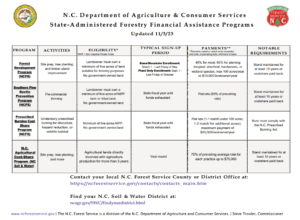
Often referred to as “the birthplace of American Forestry,” North Carolina boasts more than 18 million acres of timber land across the state, most of which is owned by private land owners. By accounting for roughly 83 percent of the state’s acreage, private landowners are in the thick of a robust forest sector that supports communities across all 100 counties. Owning timberland is one thing, but ensuring this vital natural resource remains healthy and productive can be toilsome. Being able to actively and successfully manage woodlands depends on careful, science-based forest management.
To help navigate the inevitable challenges that come with the territory of being a woodland owner, the N.C. Forest Service (NCFS) offers landowner-friendly forestry technical and financial assistance programs such as the Forest Development Program (FDP), Southern Pine Beetle Prevention Program, and N.C. Prescribed Burning Cost Share Program.
Vinson Bridgers and partner Scott Dunn, owners of 385 acres in Edgecombe County—50 of which is timberland ranging from three to 40 years old—have utilized N.C. Forest Service cost share programs over the years to help them implement forest manage ment practices that not only benefit them, but North Carolina as a whole. Bridgers received financial assistance through the Forest Development Program and Southern Pine Beetle Preven tion Program to conduct forestry practices such as reforestation, precommercial thinning, and understory spraying.
For a landowner to qualify and apply for cost share assistance, a management plan approved by the N.C. Forest Service must be in place. Michael Witting, a consulting forester who offers a variety of forest management services such as timber inventory, reforestation, herbicide application, and wildlife management to residents of Virginia, North Carolina, and South Carolina, wrote Bridgers’ initial management plan more than 15 years ago. The N.C. Forest Service encourages private landowners to employ professional consulting foresters whenever possible to provide needed forestry services.
The forest management success that Bridgers and Dunn have enjoyed over the years is a testament to the relationship between committed landowners, the dedication of a consulting forester, and a dependable N.C. Forest Service staff.
For more information on available technical and financial assistance programs and to learn how to apply, contact your NCFS county ranger’s office. Contact information is available at www.ncforestservice.gov/contacts.
I don’t own a farm, but I’d love to do more for wildlife in my yard. How do I get started?
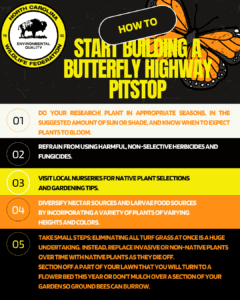 In conjunction with the National Wildlife Federation, NCWF offers a Certified Wildlife Habitat program, allowing private landowners the chance to designate their own yards as a safe place for wildlife of all kinds. North Carolina is the proud home of the 4th highest number of Certified Wildlife Habitats in the country, and the Federation can help you get started. Creating a Certified Wildlife Habitat simply means providing the four key elements wildlife need in order to survive: food, water, cover, and places to raise young.
In conjunction with the National Wildlife Federation, NCWF offers a Certified Wildlife Habitat program, allowing private landowners the chance to designate their own yards as a safe place for wildlife of all kinds. North Carolina is the proud home of the 4th highest number of Certified Wildlife Habitats in the country, and the Federation can help you get started. Creating a Certified Wildlife Habitat simply means providing the four key elements wildlife need in order to survive: food, water, cover, and places to raise young.
NCWF’s Butterfly Highway is another great way to provide critical habitat to an overlooked group of wild creatures. This statewide conser vation restoration initiative aims to restore native pollinator habitats to areas impacted by urbani zation, land use change, and agriculture. From backyard Pollinator Pitstops to large-scale roadside habitat restoration, the project is creating a network of native flowering plants to support butterflies, bees, birds and other pollen- and nectar-dependent wildlife. Just this year, the Butterfly Highway registered 3,000 Pollinator Pitstops, building a solid network of pollinatorfriendly habitats across the state. Registering your yard as a Pollinator Pitstop not only helps connect pollinator corridors, it also boosts the natural beauty of your garden.
NCWF can help you connect with experts and provide information to get you started with both programs. To join other conservation-minded private landowners by certifying your yard, balcony container garden, schoolyard, work land – scape or roadside greenspace as a Certified Wildlife Habitat or a Pollinator Pitstop, reach out to info@ncwf.org .
I’ve been following NCWF’s support of the Red Wolf Recovery Program. Are there ways for landowners to get involved?
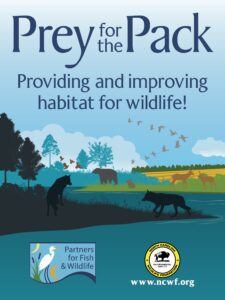 Absolutely! The Prey for the Pack program, implemented by NCWF and the U.S. Fish and Wildlife Service through the federal agency’s Partners Program, strives to improve prey habitat on the Albemarle Peninsula for red wolves and build community awareness and support for this species. Predatorprey relationships are extremely important to maintaining ecological balance, and a great way to support these natural processes is through habitat improvement projects.
Absolutely! The Prey for the Pack program, implemented by NCWF and the U.S. Fish and Wildlife Service through the federal agency’s Partners Program, strives to improve prey habitat on the Albemarle Peninsula for red wolves and build community awareness and support for this species. Predatorprey relationships are extremely important to maintaining ecological balance, and a great way to support these natural processes is through habitat improvement projects.
Prey for the Pack offers private landowners two voluntary ways to participate: 1) active habitat improvement through a cost-share agreement, and 2) a zero-cost agreement where the landowners pledge support for wildlife, specifically red wolves, by providing access to their land for monitoring and management opportunities. Through the first option, private landowners can increase edge habitat, early successional plant species, create openings for wildlife, or improve pollinator habitat to achieve wildlife goals. Additional habitat costshare options may include creation or maintenance of early successional forested or riparian habitat, prescribed burning, native vegetation plantings, or wetland enhancement.
Nearly 2,000 acres have been enrolled in the program. If you own or manage property in Beaufort, Dare, Hyde, Tyrrell, or Washington County, please consider reaching out to NCWF to assist with the Prey for the Pack program.
Want to Help Wildlife AND Get A Tax Break?
The Wildlife Conservation Land Program (WCLP) through the NC Wildlife Resources Commission (NCWRC) may be a good fit for you. Known as WCLP, this program was authorized by state legislation in 2008, and designates “Wildlife Conservation Land” as a special class of property that must be assessed at a reduced valuation. This program offers a property tax deferment for tracts of land which are actively managed primarily for wildlife habitat enhancement.
The initial 2008 legislation targeted properties where wildlife species designated as endangered, threatened, or special concern by NCWRC lived. In addition, parcels managed to conserve at least one of six priority wildlife habitat types identified in the State’s Wildlife Action Plan were also eligible for the WCLP. While the original legislation was a great step in the right direction, it left many tracts ineligible, especially in the rapidly developing Piedmont and Coastal Plain regions of the state.
In June of 2018, House Bill 320, which revised the WCLP General Statute, was signed into law, creating a third type of land that qualified for the program: “Wildlife Reserve Land.” According to the updated legislation, land that qualifies for the WCLP under this newest criterion is “actively and regularly used as a reserve for hunting, fishing, shooting, wildlife observation, or wildlife activities; upon which wildlife management activities are conducted to ensure the propagation of a sustaining breeding, migrating, or wintering population of indigenous wild animals.” To qualify as Wildlife Reserve Land, active management practices must be implemented on the property. A minimum of 20 acres of contiguous qualifying habitat is required to be eligible for enrollment in the WCLP.
The three qualifying habitat criteria for the WCLP, beyond the standard requirement of ownership of 20 contiguous acres of qualifying land, are:
CRITERION 1 – Land inhabited by Threatened, Endangered, or Special Concern Species
CRITERION 2 – Land managed to maintain Priority Habitats, which are bat caves, early successional habitat, longleaf pine forest, rock outcrops, small wetland communities, and stream and riparian zones
CRITERION 3 – Wildlife Reserve Land
For additional eligibility requirements and to determine if WCLP is compatible with the goals and objectives you have for your property, see the NCWRC’s webpage on the Wildlife Conservation Land Program (www.ncwildlife.org/WCLP).
Written by:
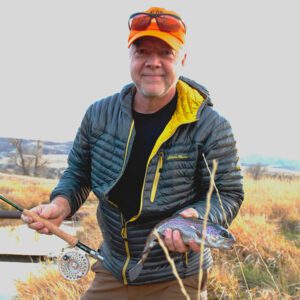
– T. Edward Nickens, Communications Editor


